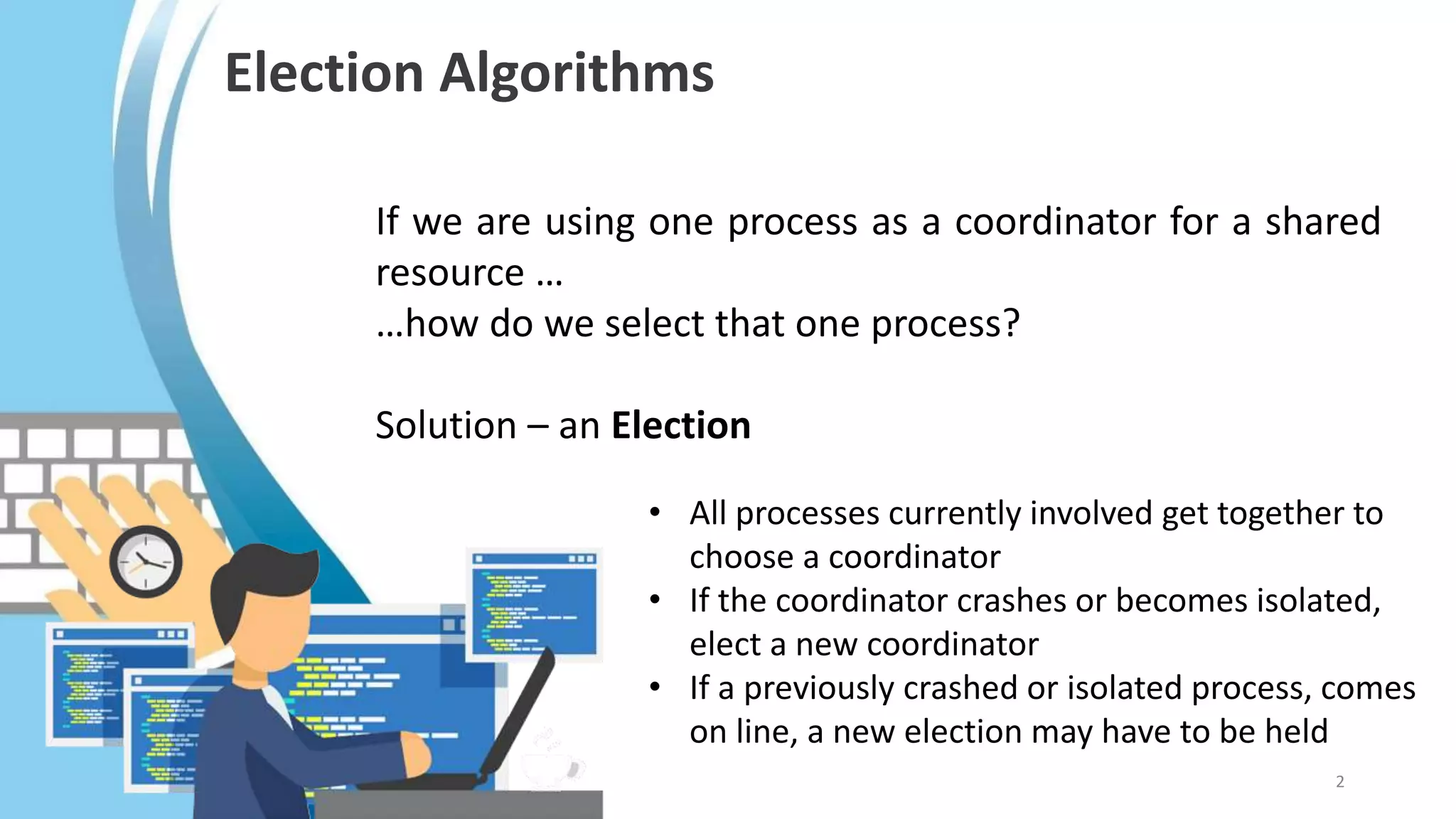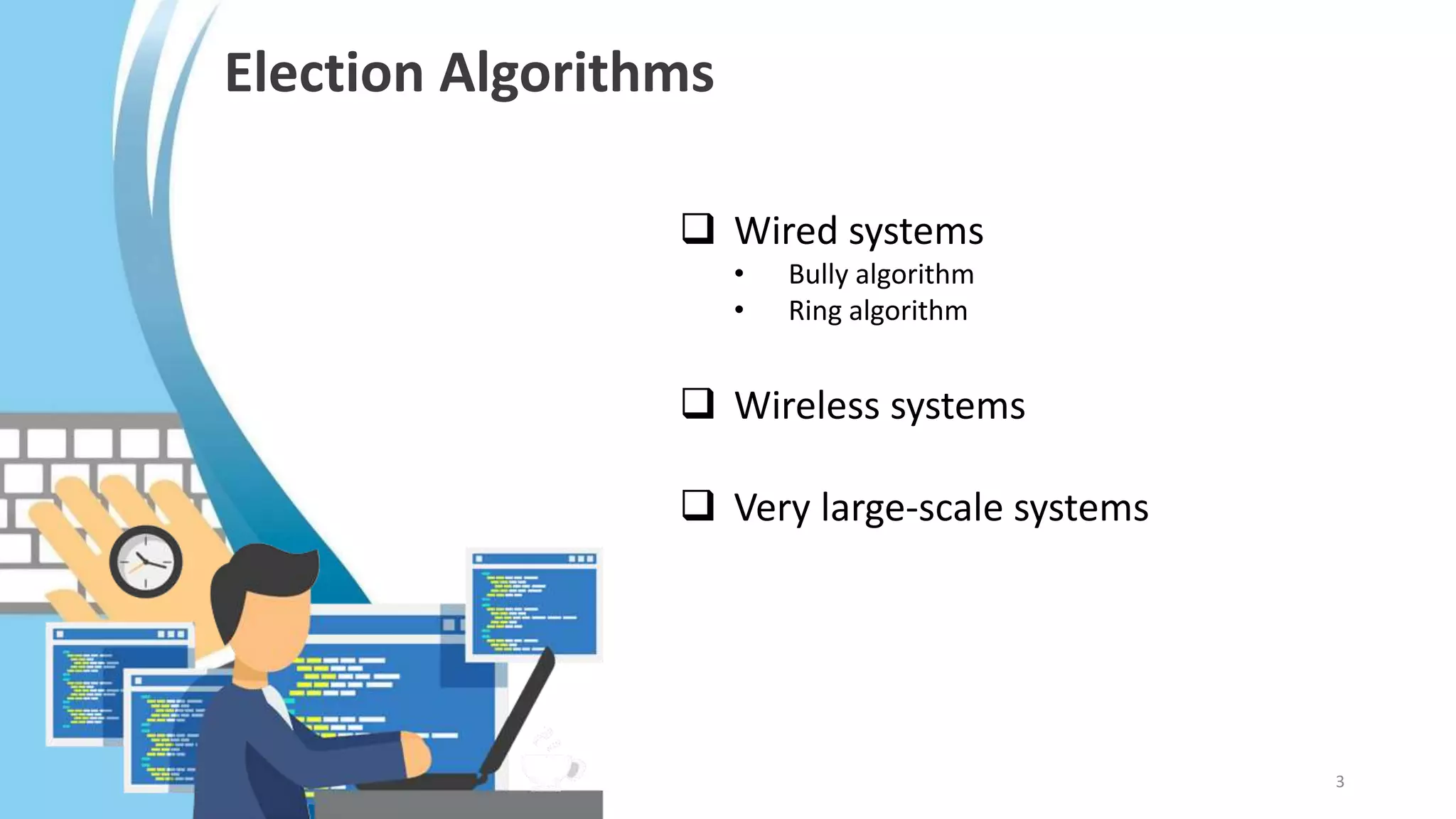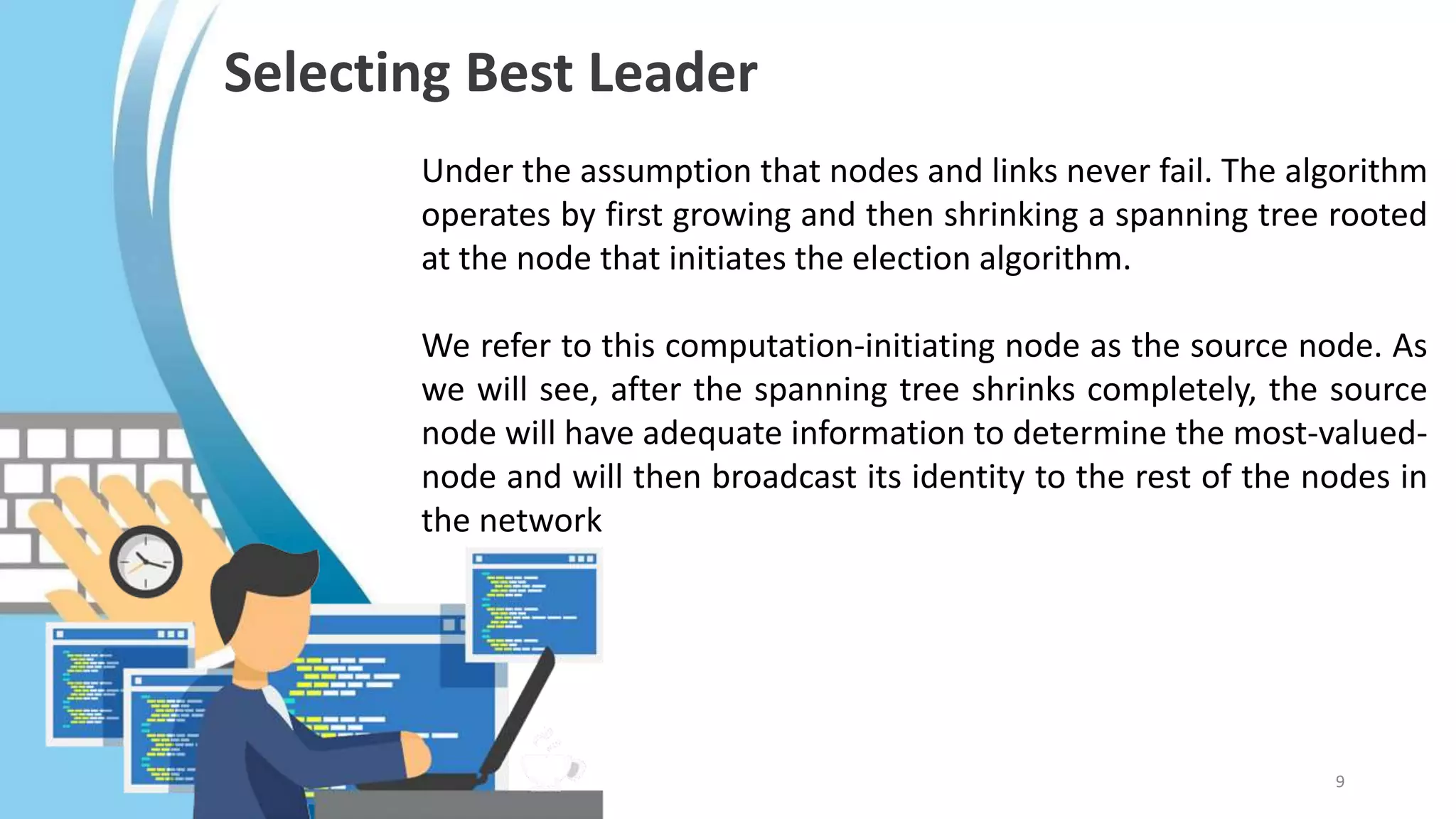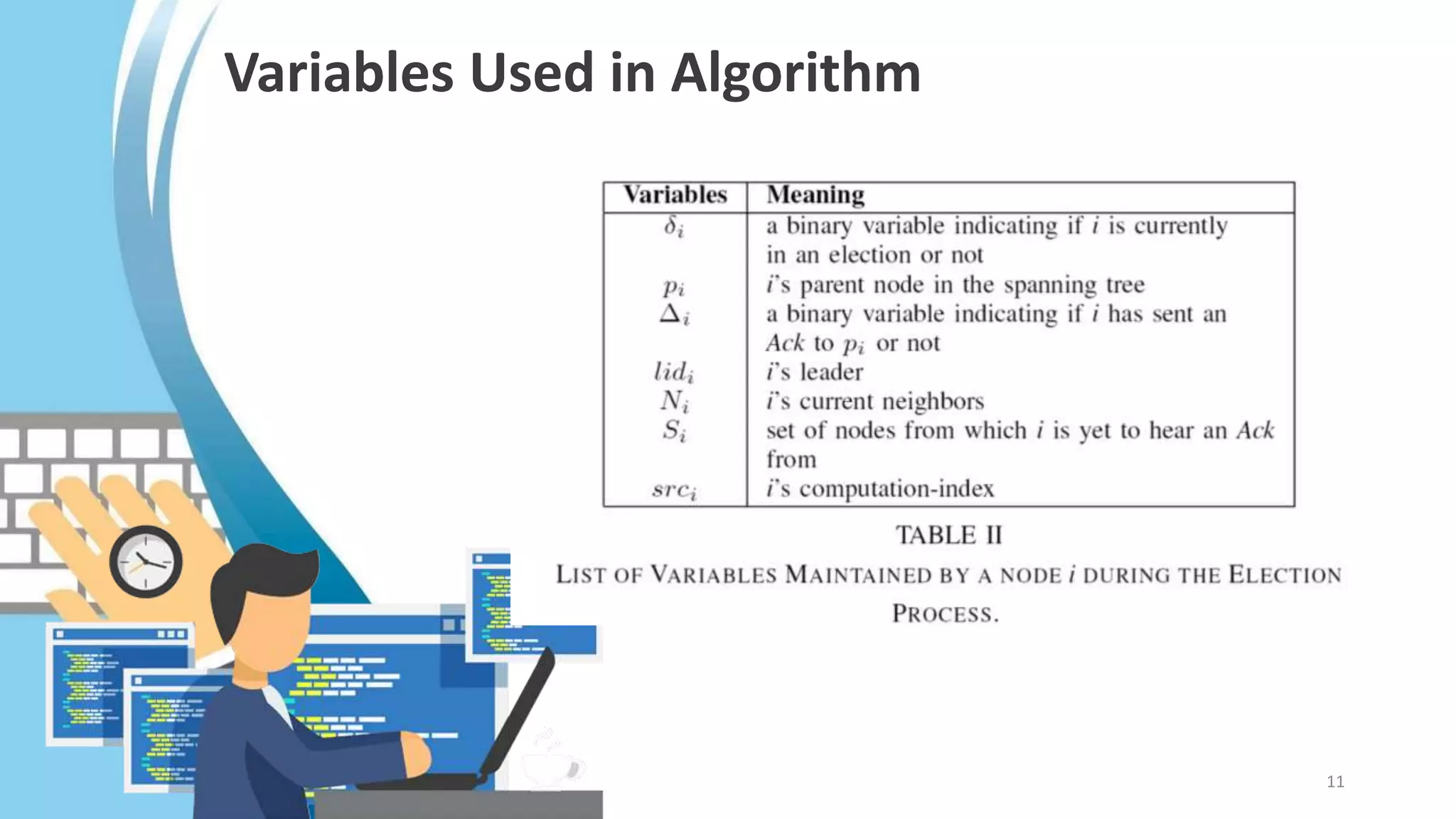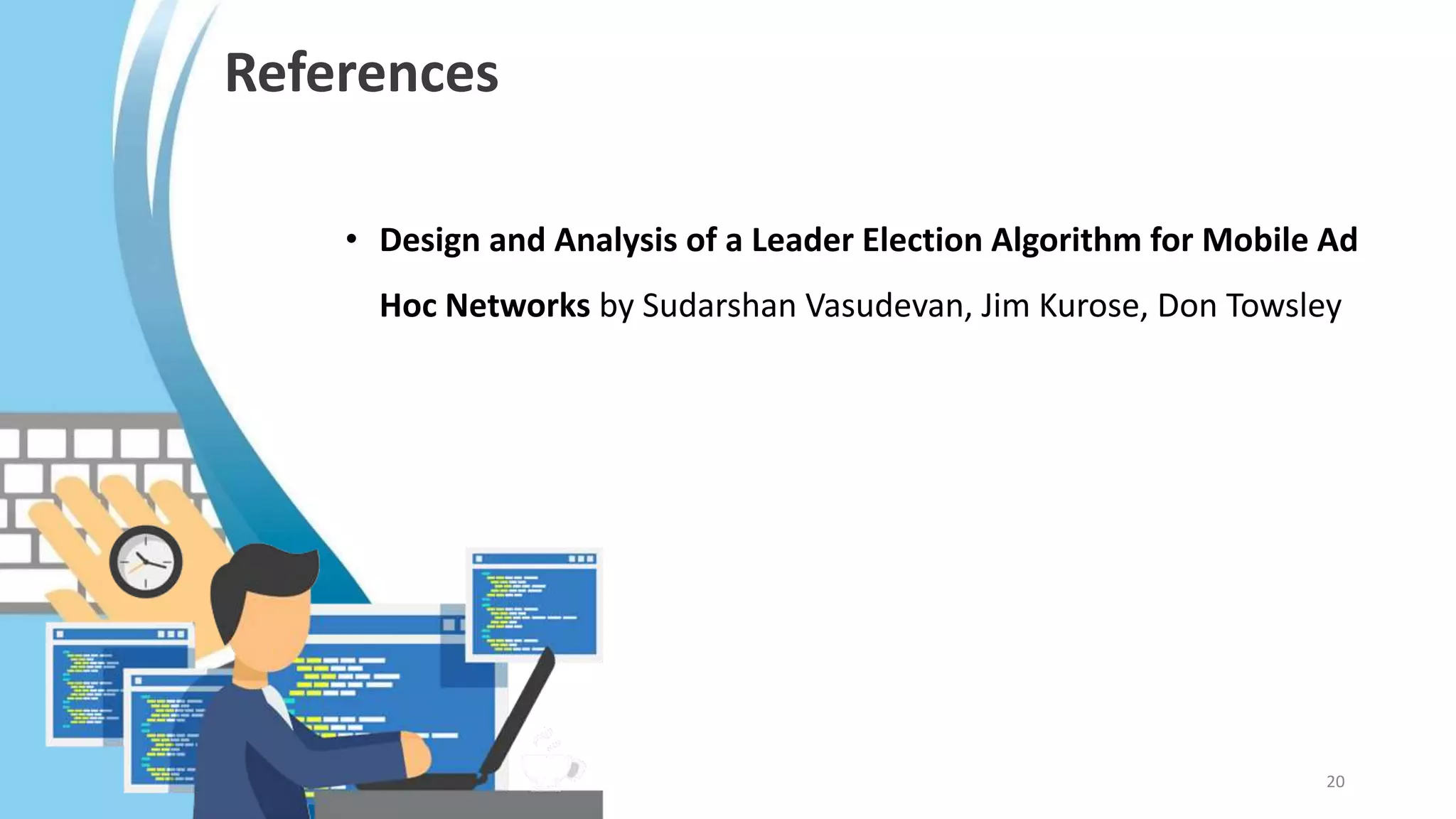This document discusses election algorithms for selecting a coordinator process in shared resource systems, particularly in mobile ad hoc networks where traditional assumptions about message reliability and network topology do not hold. It examines a proposed solution that handles node failures and network partitioning, ensuring the election of the best leader based on node values and unique identifiers. The algorithm operates by establishing a dynamic spanning tree and communicating election messages to determine and broadcast the most eligible leader.

